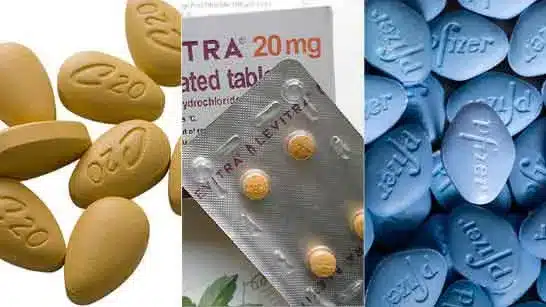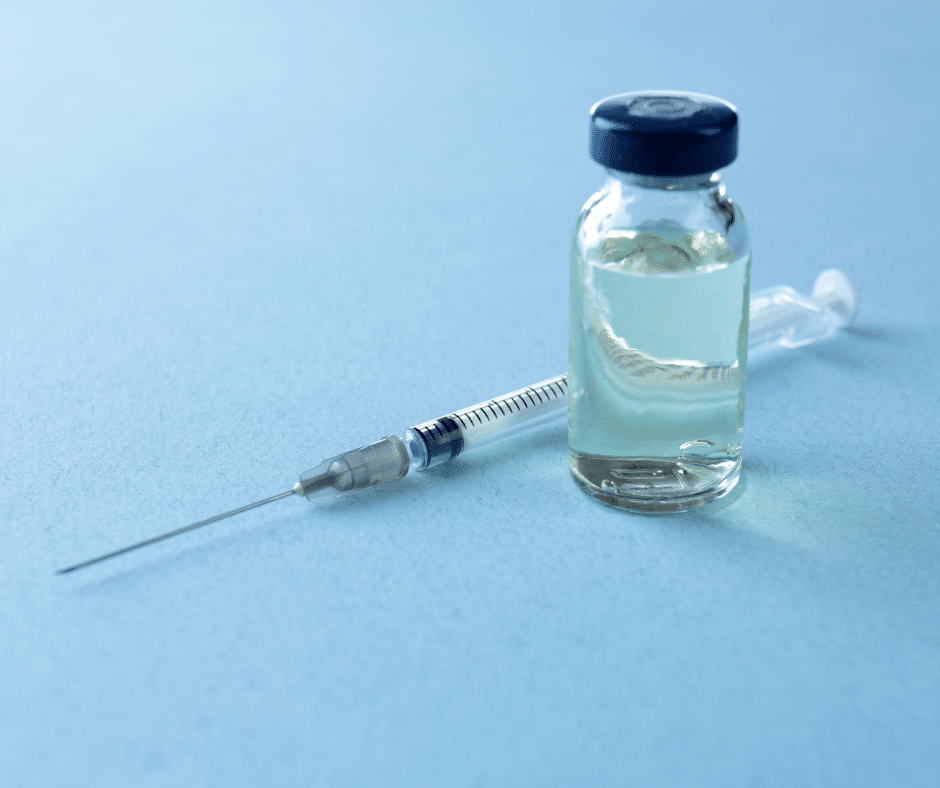Have you recently overcome prostate cancer or benign prostatic hyperplasia (or BPH)? If so, then you already know that being cured is not where the healing stops, but rather where it begins. Life after a prostatectomy or a similarly invasive prostate treatment can become a complex shell game of trying to figure out which side effects or symptoms were caused by the disease and which may have been caused by the treatment. Despite the fact that intense education and screening have led to prostate cancer being one of the most frequently diagnosed and treated cancers in the world[i], postoperative care has unfortunately not kept up the pace.

What do we know about overcoming Erectile Dysfunction and prostate disease? Let’s start here. What are we talking about when we say prostatectomy? Generally speaking, a prostatectomy is the surgical removal of part or all of a patient’s prostate gland to treat either cancer or BPH[ii]. You can read more about prostatectomies (including the different methodologies) here, in this free eBook by board-certified urologist, Dr. Judson Brandeis. Treatment for these conditions typically falls into one of two categories: invasive and less invasive. The Medical Health Institute is a center for Men’s Wellness in Miami, FL. We specialize in Bioidentical Hormone Replacement Therapy, ED Treatment and overall health and wellness. Continue reading to learn more about erectile dysfunction and prostate disease and the various options at your disposal.
Minimally Invasive Prostate Surgery And Its Effects On ED
Minimally invasive surgeries are typically outpatient procedures that can be performed in your doctor’s office or practice utilizing minimal anesthesia. TUMT[iii], Rezum (CWVA[iv]) and other less invasive therapies for BPH all work to offer symptom relief and are favored by doctors and patients for their relatively fast recovery and the low risk of developing blood clots or infections. These treatments are effective at helping some men manage their symptoms, but they are not without their drawbacks.
Although symptom relief is the desired goal, many times, surgery of any kind can have painful or protracted side effects post-surgery. Many of the inciting symptoms can be addressed through these less invasive therapies. That being said, they may also affect a man’s sexual health. Many side effects like the development of UTIs and blood in the urine will normally resolve themselves as the body heals. Occasionally the resolution of these symptoms begets or occurs in tandem with new ones like erectile dysfunction and retrograde ejaculation. (This is when semen flows backward into the bladder instead of out of the penis).


A more intensive treatment option for addressing prostate cancer and BPH is surgery. During surgery, part or the entire prostate is removed to keep the cancerous cells from spreading or the gland from affecting urinary function. There are several surgical treatments available, but all typically require the patient to be put under anesthesia while the cancerous or enlarged tissue is removed. The two most common types of prostate surgery include the radical retropubic prostatectomy. In this specific surgery, an incision is made in the lower abdomen to gain access to the prostate. On the other hand, during the radical perineal prostatectomy, an incision is made between the anus and scrotum to access the prostate.
In both surgical instances, the threat of infection and clotting is elevated, but unlike minimally invasive procedures, the effects of these surgeries tend to last longer than less invasive options. Patients who undergo prostatectomies also tend to have an increased risk of developing urinary leaks, infection, hernias, and problems with their penises including the narrowing of the urethra [v] and ED [vi]. This is partially why so many doctors suggest their patients begin a penile rehabilitation program as soon as possible after surgery, which can also limit and prevent fibrosis and local hypoxygenation.
Sex After Prostate Surgery
For years, the pervasive opinion of the medical community for treating erectile dysfunction post-surgery could be summed up by the following. Johns Hopkins urologist, Trinity Bivilacqua, M.D. Ph.D., says of sex after a prostatectomy:
“You use the prescription erection pills. If they don’t work, you move to injectable medications. If they don’t work, you get a penile prosthesis.” [vii]
Although this has been the standard model for many practitioners, interest from the public for noninvasive treatment options for erectile dysfunction continues to grow. Before we look at these alternatives, let’s first examine the most common treatments for men suffering from erectile dysfunction and prostate disease post surgery.

Erectile dysfunction is very common post-prostatectomy surgery. So common that when patients are sent home, they are given a prescription for ED medication. In fact, many doctors proactively prescribe these meds in case men experience trouble gaining and maintaining an erection strong enough for sex. However, the truth is there is little evidence to support their daily use with a faster, natural recovery. At the same time, these medications can boost men’s confidence. In effect, allowing them to resume some sexual function. For many men, however, the drugs don’t provide a convenient or long-term solution. Furthermore, not all patients respond similarly to these pills after surgery.
Since prostate surgery does not normally affect the blood supply to the penis, regularly occurring erectile dysfunction can point to another underlying issue. Unfortunately, with ED pills, it can often take 9 to 12 months for a patient to see the most benefit. If a man is taking them several times a week, this can become an expensive experiment [viii]. For these men, if the surgical area has healed and the penis is still unresponsive to multiple doses of these medicines, injection therapy is typically the next step. Continue reading about overcoming erectile dysfunction and prostate disease.
Erectile Dysfunction Treatment And Injection Therapy
Medical Health Institute And Injection Therapy For Erectile Dysfunction
It’s often important to remember why erections are actually important to a man’s health. When there has been trauma in the body that affects the flow of blood to your penis, there is a risk of developing ischemia in the penis. This is a a restriction of blood to the tissues and vessels within the penis. If regular deliveries of oxygenated, nutrient-rich blood doesn’t make it to the penis, vascular atrophy can set in. This increases rigidity and causes plaque to build up within the blood vessels. In effect, this further impairs it’s ability to function properly.
What If I Am Unresponsive To Oral ED Medication?
For men who are unresponsive to oral ED medications, injection therapy may be an alternative. As the name implies, injection therapy involves administering the medication directly into the penis via a small needle. An erection typically occurs within five to twenty minutes. As the medication relaxes the smooth muscle tissue within the penis and dilates the main arteries, it is able to fill the penis with blood. These injections produce an erection that can last anywhere from 30 to 90 minutes. Unfortunately for some men, although the injections can produce an initial erection, they are not sustainable. We mean this in a sense for regular intercourse. This is due to damage to the veins as a result of diabetes, heart disease or other health problems along with the initial surgery.

As with other organs of the body, the penis needs activity to remain healthy. The reason that prostate surgery so regularly affects a man’s sexual function is that doctors are often working in the “same neighborhood” so to speak. Factors such as inflammation and nerve damage can all affect a man’s ability to get and maintain an erection. As the body heals after surgery, the body repairs the area with scar tissue. When this tissue hardens, it can cause fibrosis, which will cause the collagen in the tissue to contract and shrink the penis. It is for this reason that vacuum devices or penis pumps are so useful for patients after surgery.
These devices work as one might expect. A cylinder is placed over the penis and a vacuum created within the chamber creates negative air pressure. This build-up of negative pressure produces an erection by pulling blood into the penis. The blood is normally held there with a band or ring, which prevents the blood from flowing back out of the penis. Although intended for non-sexual exercise, because it creates an erection, some men use vacuum devices to initiate intercourse. The problem for many men, however, is that even though vacuum devices are effective at producing an erection, many also suffer from side effects like numbness and discoloration from the constriction. Tiny red dots (petechiae), which indicate subdermal bleeding, and pain or discomfort from bruising or restricted seminal flow[ix]. For more information about vacuum devices, download The Urologist’s Guide to Better Erections After Prostate Cancer, by Dr. Judson Brandeis. Access this free eBook by Clicking Here.
Prosthetics tend to be one of the last options for restoring a man’s sexual health because it also requires an invasive procedure. Most prostheses are made from a malleable or inflatable material that is inserted within the penis. This creates a semi-rigid erection that can simply be manipulated into place to instigate sex. Alternatively, a man can choose an inflatable device in which a hydraulic pump is used to create the erection. In both cases, however, penile implants are reserved for treating erectile dysfunction when there is a clear medical condition that has been unresponsive to other means.

Gainswave ED Treatment Therapy
Alas A Solution To Erectile Dysfuntion
One revolutionary treatment that has begun to garner a lot of attention is GAINSWave®. This therapy was developed more than fifteen years ago and has been able to offer a safe, noninvasive treatment for restoring and optimizing sexual health not previously seen in other treatments. Whereas pills, pumps, and injections only work to treat the symptoms of erectile dysfunction post-surgery, GAINSWave actually works to address the underlying cause.
How Does Gainswave Work?
It accomplishes this by using high-frequency, low-intensity sound waves to break up fibrous tissue and plaque that has built up within the blood vessels that feed the penis. This increase in blood flow also works in tandem with these sound waves to trigger the growth of new blood vessels and nerve fibers. This is known as the process of neurogenesis[x]. As more and more patients begin to seek out alternatives to invasive procedures and nasty side effects, Gainswave Shockwave therapy has grown in popularity for its fast administration. Gainswave sessions typically last less then an hour, lack side effects and most remarkably posses no downtime.
Are There Studies On Gainswave’s ED Treatment?
Multiple past and current research studies report success rates of around 75 percent for those suffering from ED. [xi] This surprises many patients who have never heard of this kind of treatment beforehand, but it is just one of the amazing benefits associated with GAINSWave therapy. Another benefit many patients are eager to report is the boost they receive to their sexual performance and function. As the blood vessels and nerve fibers grow, it is not uncommon for patients to experience better, more satisfying erections. This is remarkable for a treatment that can be done in your doctor’s office in less than an hour. GAINSWave also doesn’t rely solely on your physical attributes, since even healthy men will experience these results. However, men who have recently had a prostatectomy should certainly tell their provider about their surgery before treatment as the acoustic waves can sometimes cause discomfort and mild inflammation where the prostate used to be.
Erectile Dysfunction And Prostate Disease Solution Conclusion
Thank you for reading our blog post on erectile dysfunction and prostate disease. No matter how you decide to reclaim your sexual health to address erectile dysfunction after surgery, it is important to remember that there is treatment available for men at any stage. Therefor, it is important to remember that your penis is a part of your body, and just like you wouldn’t neglect problems with your arm or foot, you should likewise not ignore regularly occurring issues with your penis. For more in-depth information about regaining sexual function after prostate cancer, you’ll want to grab your copy of this free eBook, The Urologist’s Guide to Better Erections After Prostate Cancer. This details not only the condition, but discussing in greater detail some of the options that are available to a man post-prostatectomy.

